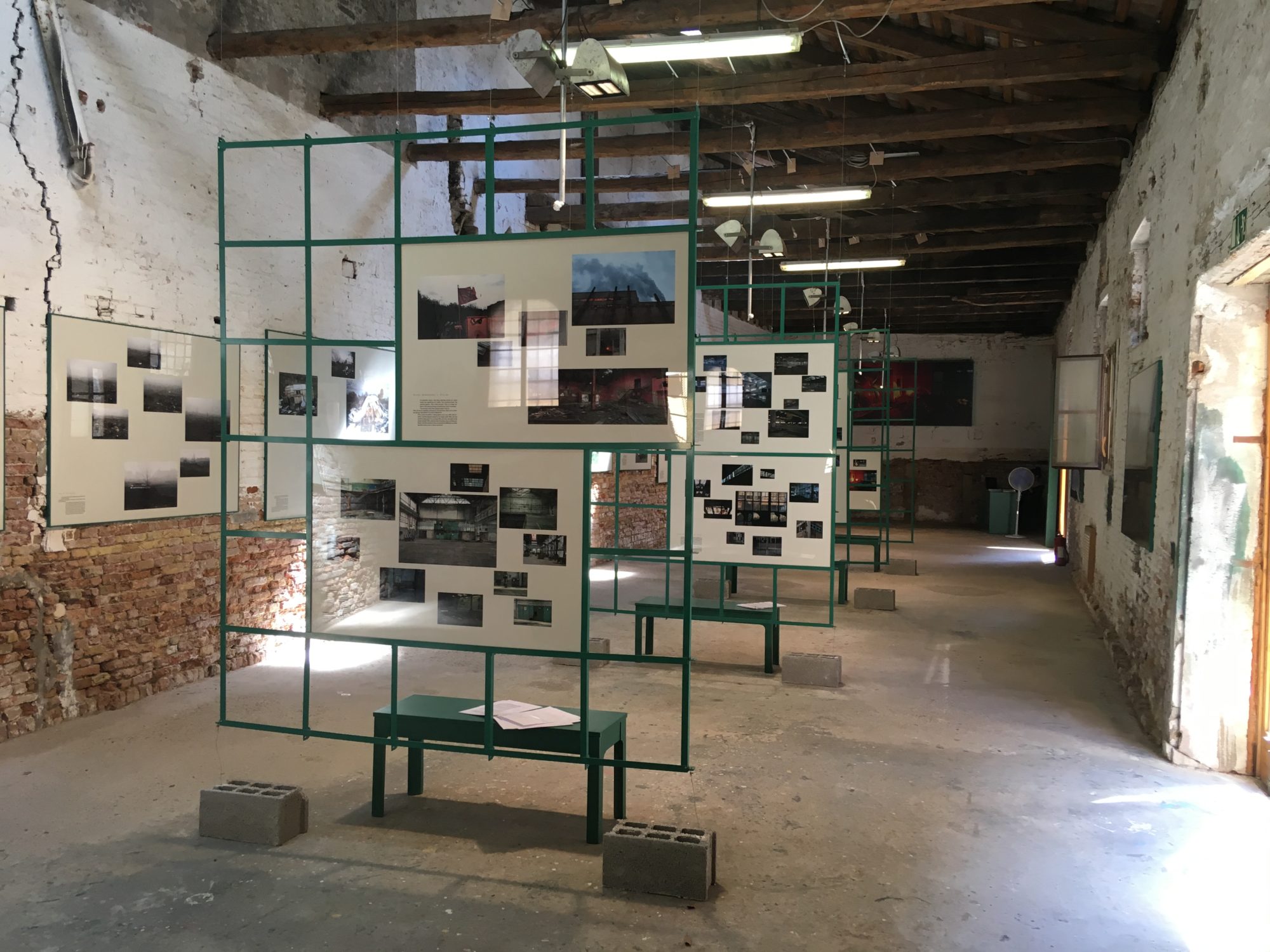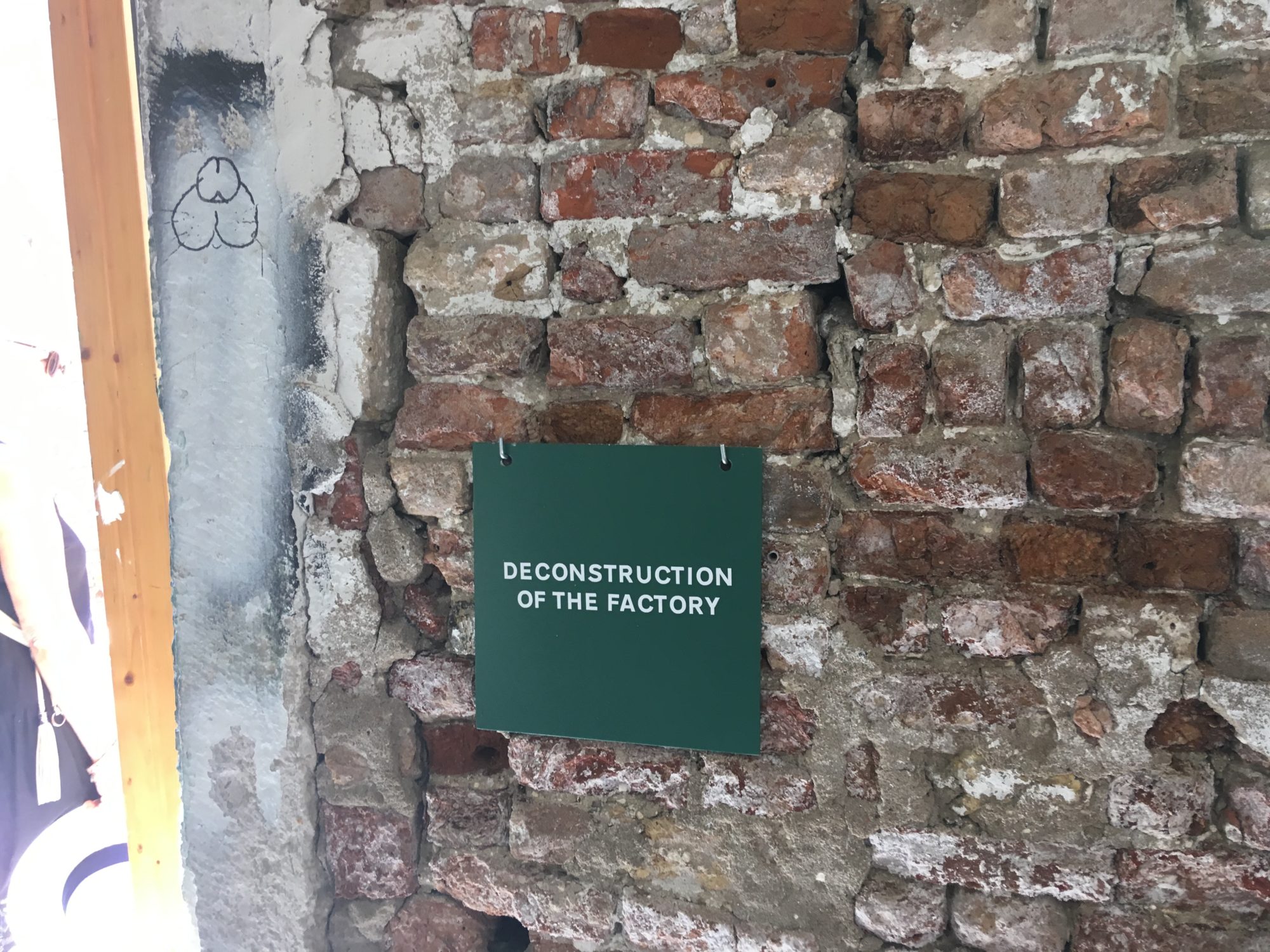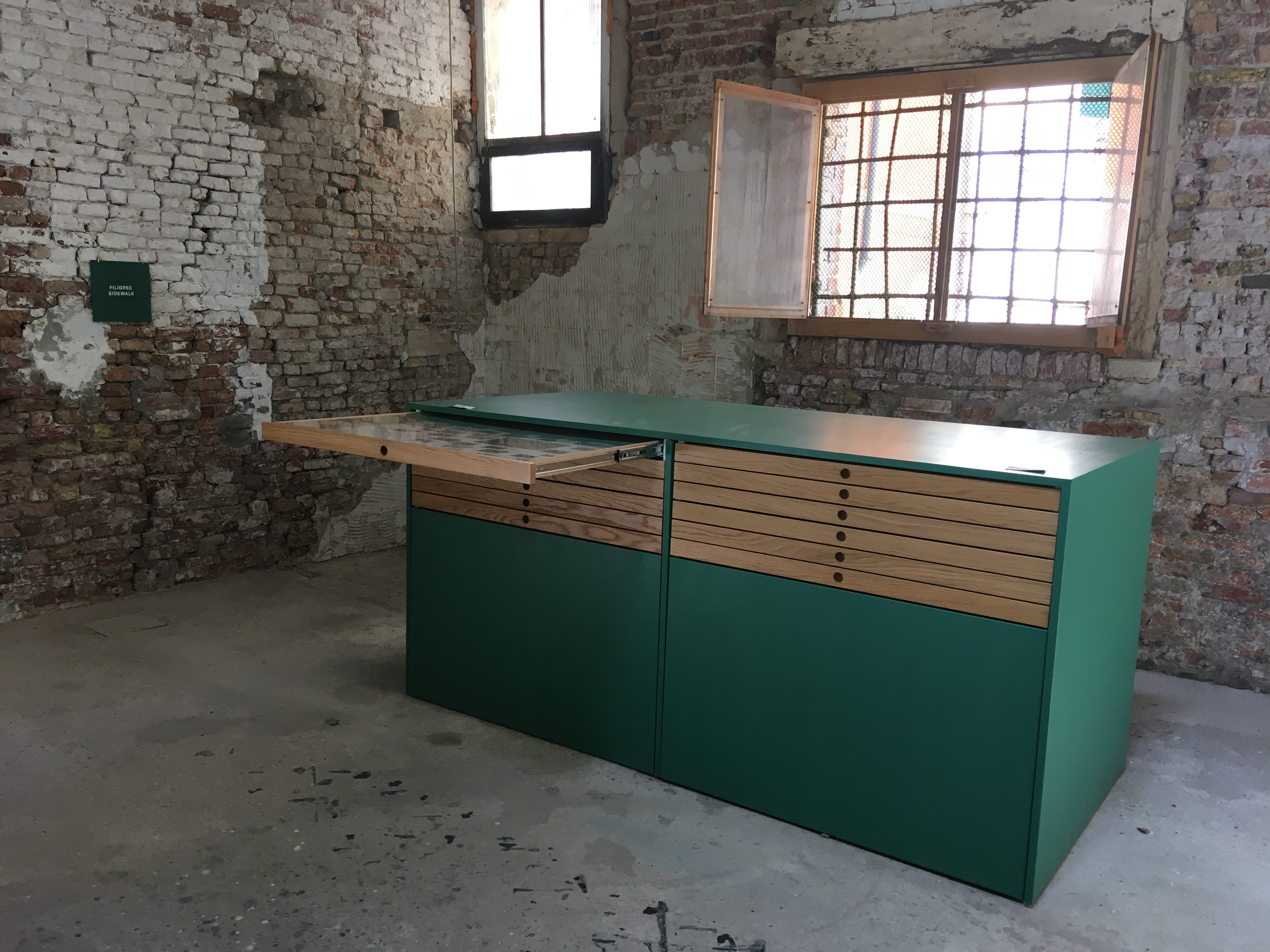Igor Grubić, Traces of Disappearing (In Three Acts) (Croatian Pavilion; Sven Spieker)

Igor Grubić, Traces of Disappearing (In Three Acts), Croatian Pavilion, 58th International Art Exhibition La Igor Grubić, Traces of Disappearing (In Three Acts), Croatian Pavilion, 58th International Art Exhibition La Biennale di Venezia, May 11-November 24, 2019. Biennale di Venezia, May 11-November 24, 2019. Photo courtesy of the author.
Igor Grubić, Traces of Disappearing (In Three Acts), Croatian Pavilion, 58th International Art Exhibition La Biennale di Venezia, May 11-November 24, 2019.
Igor Grubić’s long-term photographic project Traces of Disappearing (In Three Acts) is a few steps down from the stately abode on the Canale Grande that is home to the Prada Foundation, where a sprawling show of the work of Jannis Kounellis is on view at the same time. The contrast between the two venues, and the works exhibited inside, could not be more striking: from the Venetian palazzo to the rough, workshop-like space with a low ceiling and painted walls that houses Grubić’s installation; from the commanding, self-sufficient installations of Kounellis to Grubić’s photographs of post-transition Croatia. Traces of Disappearing comprises three series of color images taken over a 16-year period. Part family album, part investigative reportage, and part agitational pamphlet, the project as a whole is not easily categorized, but it’s safe to say that Grubić does not see himself as an illustrator of post-Socialist malaise or as a nostalgic mourner of the Yugoslav experiment. Rather, as a documentarist, he wants to teach us how to see. To this end, his photographs, presented in a variety of formats, are accompanied by a sprawling commentary whose function again is not illustrative but instructive. We learn, for instance, that in the shanty town erected in the urban periphery—consisting of a wooden hut, an outdoor bathroom, and an old caravan, all memorably chronicled in photographs that persistently alternate between a macro-view and a more detailed focus— “solidarity and empathy prevail” and that “the ruling principle is a sustainability based more on an economy of caring … than on the exchange of goods.”(Igor Grubić, Traces of Disappearing (In Three Acts)(Berlin: Sternberg Press, 2019), pp. 82-83.)

Igor Grubić, Traces of Disappearing (In Three Acts), Croatian Pavilion, 58th International Art Exhibition La Biennale di Venezia, May 11-November 24, 2019. Photo courtesy of the author.
It is constitutive of Grubić’s project, which is often referred to as “humanist”, that we cannot see or verify these values in the photographs themselves, since as an archive of stills, unlike film, they do not show behavior over time, only in its material results. However, this is not a flaw in Grubić’s eyes, on the contrary: he firmly believes, with Marx, that our history can only be understood from within the material conditions in which we exist. This is also why not a single person can be seen in the entire project, and why in the book version of the installation empty pages rhythmically interrupt the flow of images; what matters most to the artist is not mimeticism or—as is so often the case at this year’s Biennale—the celebration of an autonomous, diverse subject, but the unglamorous places such a subject might inhabit: Grubić is interested in a “there”, in concrete places (such as the shantytown, whose eviction by the authorities and later destruction by a storm is told in subsequent photographs) that he views as alternatives to digital capitalism’s emphasis on the much-vaunted immaterial—a form of dis-placement.
The photographs that make up Traces of Disappearing occupy three separate zones in the installation: the (roughly painted) brick walls; a series of large metal screens in the middle of the room—reminiscent of notice boards in a factory—; and a wooden cabinet of the kind often found in architectural offices or archives, with narrow drawers the visitors are invited to pull out. These three sections correspond to the three “Acts” in the project’s title: “The Wild House”; “Filigree Sidewalk”; “Deconstruction of the Factory.” Within these sections, Grubić’s images form series, suggesting, as his empathetic running commentary does, too, that no single image can do justice to the situation he confronts. In a series, photographs enter into relationships, they become syntactical, like sentences. Sometimes, a sequence of two or more images hints at a relationship of cause and effect. Yet this is not the only way in which the artist establishes relations between images.
For example, the ruined factory that is at the center of one of his installation’s three “acts” is a steel mill, and things made of steel, especially heavy gates and doors, play a key role in other images as well, especially in the section focused on the era of craft production (in the chest of drawers at the far side). Interestingly, steel—in the form of armatures and supports, plates, beams, and a whole collection of heavy tools and implements—is also much in evidence at the Kounnellis show over at Prada, although the differences between the two are instructive: for Kounellis, steel represents the bedrock of the industrial revolution, and hence of bourgeois culture as a whole, and this function determines its multiple uses in his work. Grubić, by contrast, visits the place “where the steel was (once) tempered” (to quote the title of a famous Socialist Realist novel) after production has long since ceased; he is interested in the (now ended) process of that production, rather than in its result. This also means that he is less tempted than Kounellis is to view steel as an eternal, quasi-transcendent “bedrock.” Where Kounellis believes in poeisis as the creation of space through or in art on the “bedrock” of bourgeois culture, Grubić searches for what may be poetic (productive, full of potential) in processes of production that once occurred in places that are marginal to that culture.

There is nothing per se new about photo series, often published in popular magazines, that extol the virtues of modernity. Especially in the Stalinist Soviet Union, such series—dramatically juxtaposing, for example, shabby “old” (pre-1917) housing with new (Soviet) ones—were quite common. What separates Traces of Disappearing from the photo spreads common in the Soviet Union during the 1930s is its curious reversal of perspective: where in the 1930s Soviet Union, the coincidence of modernity with the ideals of Soviet society was celebrated as a given, in the neo-liberal age, the two elements of the equation have gone their separate ways. Values such as solidarity, community, and autonomous self-management—notions that also once underpinned the as-yet unrealized promises of the Yugoslav experiment—are now associated not, as was the case in the 1930s spreads, with technical innovation and progress, but with the eclectic bric-à-brac of a shantytown, or with a small (but cozy) hovel constructed of debris in the shadow of a McDonalds. Paradoxically, Grubić appears to argue, to access the possibility for a different future, a different modernity, there may be no better place to look than the ruins of what the past has left behind, including the abandoned factory whose shattered windows now appear, in the artist’s words, as so many “broken windows into the future.”(My colleague Raino Isto has helpfully pointed to the recent spade in interest in “ruin photography” in the former Eastern Bloc and elsewhere. For me, what distinguishes Grubić project from this trend is his dialectical approach to the ruin as something we can understand only within the broader processes of transformation that have affected (Croatian) society.) Crucially, his syntactical method—which he acknowledges may be limited to the artist—allows him to argue not only historically, through the logic of capitalist expediency, but also from within the abandoned factory or the shanty town. Grubić here arrives at exactly the point that Walter Benjamin, in his “Thesis on History” once identified as the moment when “historical materialism cuts through historicism,” the point where an understanding of history as an eternal durée, as in Kounellis’ example, meets history as lived experience.(Walter Benjamin, “On the Concept of History,” https://www.sfu.ca/~andrewf/CONCEPT2.html. Accessed 08/26/19.) This, I submit, is exactly where we should locate the speculative crux of Grubić project. Here, and in the stunning beauty and precision of his photography, in itself a living testimony to the undiminished value of craft.
Articles in this special issue:
[su_menu name=”Venice Biennale”]





